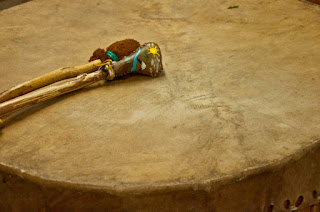A Siberian shaman who made national headlines for attempting to trek to Moscow and "cast out" Putin from power won't restart his journey, he said after being discharged from the mental asylum he was forced into earlier this year.
In a statement carried by local media, Alexander Gabyshev said he wishes to focus on his health and personal life.
"In order to get my health in order, I have to live on my own now. I think you will understand my decision," he said. "I'll take care of my teeth, get my documents in order and think about working in the future."
Gabyshev first set out from his home in the republic of Sakha last year, planning to trek over 8,000 kilometers to Moscow before performing a ritual to "banish" Putin from the Kremlin.
He dragged a cart carrying his belongings along highways, gathering a small following and meeting supporters in cities he passed.
He and his supporters were detained several times, forcing the shaman to restart his journey from his home city of Yakutsk each time.
Authorities in Yakutsk placed him in a mental asylum in June after he announced a third attempt to trek to Moscow, a move condemned by rights groups as an attempt to silence a dissenter and compared to Soviet-era punitive psychiatry.
"To the many people who supported me mentally and supplied me with food and clothing ... I express my gratitude and sincere goodwill. And now, without losing heart, we need to live like human beings," he said in his statement.
In a statement carried by local media, Alexander Gabyshev said he wishes to focus on his health and personal life.
"In order to get my health in order, I have to live on my own now. I think you will understand my decision," he said. "I'll take care of my teeth, get my documents in order and think about working in the future."
Gabyshev first set out from his home in the republic of Sakha last year, planning to trek over 8,000 kilometers to Moscow before performing a ritual to "banish" Putin from the Kremlin.
He dragged a cart carrying his belongings along highways, gathering a small following and meeting supporters in cities he passed.
He and his supporters were detained several times, forcing the shaman to restart his journey from his home city of Yakutsk each time.
Authorities in Yakutsk placed him in a mental asylum in June after he announced a third attempt to trek to Moscow, a move condemned by rights groups as an attempt to silence a dissenter and compared to Soviet-era punitive psychiatry.
"To the many people who supported me mentally and supplied me with food and clothing ... I express my gratitude and sincere goodwill. And now, without losing heart, we need to live like human beings," he said in his statement.




















